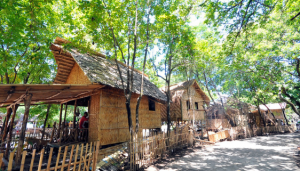Farm clustering is the key to ensure quality of rice and generate income compared to the individual farmer approach, officials from the Rice Board said.
In farm clustering, technical interventions provided by the Department of Agriculture (DA), local government units (LGUs), and private sectors can focus on increasing the level of production when farmers are clustered in every 80-100 hectares.
Rice Board President, Recher E. Ondap said that the clustering will produce quality of rice as the farm focuses on 1-2 specific varieties unlike individual farms that mixes up various varieties.
“May mga intervention ang DA and the private sectors, we’ll make sure that we will have good and quality rice,” Ondap said.
Ondap said that the rice board promotes clustering to enable farmers to do a variety of production and varietal milling.
“Pag [nakita] natin na ito ang kailangan ng market dito, then yung millers na yan ay talagang ito yung variety na kukunin niya so that yung bigas na gusto ng mga consumers ay nag-aakma doon, Ondap said.
One of the four core strategies of the Masagana Rice Industry Development Program (MRIDP) is SAma-sama (clustering and consolidation of farms), along with other services provided to the farmers including giving free hybrid rice seeds (for the irrigated areas), inbred seeds (for other rice ecosystems), fertilizer discount voucher to minimize effect of fertilizers’ price increase, e-voucher for bio-fertilizer, mechanization, irrigation, credit among others.
MRIDP Productivity enhancement focal person, Dr. Frisco Malabanan said the farmers can avail free hybrid seeds provided that they are registered in the Registry System for Basic Sectors in Agriculture (RSBSA).
The budget earmarked for MRIDP for 2023 is 15 billion pesos, and it will double in 2024 by almost 31 billion, once passed at the bicameral meeting.
Farm clusters can benefit all the services provided to farmers, and through the cluster, the complete value chain approach from production- processing- marketing, is completed. Also, all of the income generated by the farm will go to the clusters, farmers’ association or cooperative.
“The farmers can use 1- 2 varieties from a company, the company itself will provide technicians who will supervise the farmers from land preparation to harvesting. The technician can focus with clusters unlike the individual farmer approach,” Malabanan said.
The official said that the cluster can have the volume of the quality of palay demanded by the market, in return they can demand a higher price for their produce.
The MRIDP is partnered with the Private Rice Industry Stakeholders Movement (PRISM), an association of traders and millers nationwide to assure a market for farmers in clusters.




